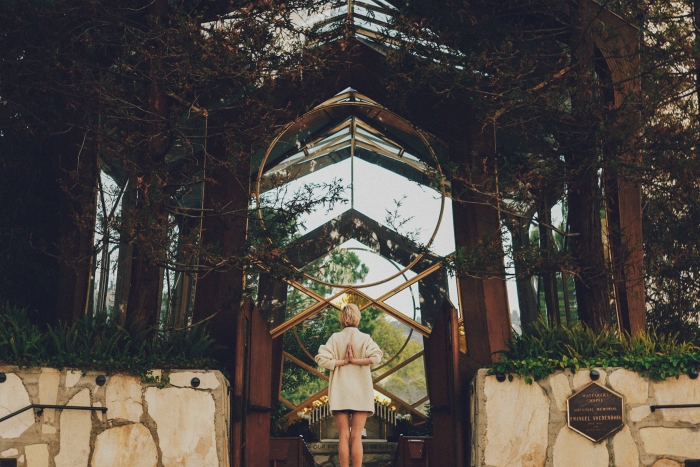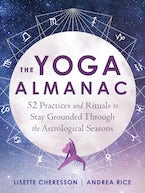By Andrea Rice & Lisette Cheresson, coauthors of The Yoga Almanac
It’s no secret that “wellness” is having a moment—it’s a $4.5 trillion dollar industry that’s growing at twice the rate of the global economy. But let’s be real: Wellness is more than trendy exercise classes, juice cleanses, or expensive retreats in exotic locales that boast promises of enlightenment. True wellness isn’t a commodity, but an internal endeavor. Wellness is about working toward wholeness, and taking a deep, sometimes uncomfortable dive within. To be well is a lifelong practice of slowing down to examine one’s own life and consider one’s reactions. In doing so, we find moments of connection with ourselves and the world around us.
Real wellness is a process of self-discovery; of creating a life that fosters more ease and fluidity with less agitation and rigidity. When we operate from a place of peaceful abundance, we lay a foundation for emotional well-being so that we may become more patient and kind toward ourselves and each other. This feedback loop of self-love and outward love makes us more aware of the delicate balance of nature. Once we begin to understand this, we no longer feel separate from the Earth’s cyclical rhythms, but connected. This union, or yoking, with the natural world is a fundamental element of yoga philosophy.
What does it mean to be a “yogi”?
Yoga is defined as the yoking of body and mind. Whether you have a physical yoga practice or are brand new to meditation, if you’ve ever paused and noticed sensation as it arises in your body and observed the state of your mind, you’ve also dabbled in key aspects of a yoga practice.
Each moment in a physical yoga practice presents us with an opportunity to move the body in ways that are wise, with the end goal—if there is one—of establishing contentment, ease, and balance in the mind. The power of choice on the mat teaches us the art of wise and skillful action that we can bring off the mat all year round.
The yogic principle of sv?dhy?ya teaches the importance of self-study. It is a practice of quiet illumination to begin to uncover the unconscious patterns that hold us back. Yoga also asks us to be in profound presence—to quiet both external stimuli and the mind’s incessant chatter in order to experience the here and now. The stillness of the present moment gives way to a sense of inherent universal interconnectedness; the lifelong journey of self-study and discovery we embark upon as yogis illuminates this interdependence—that nature does not exist in a vacuum and neither do we. By acknowledging the ebb and flow of nature’s rhythms, we realize how they influence our thought processes and even the subtle energies within the body. This is the path to true holistic well-being.
Balance, of course, is something we strive for all year round in both mind and body, as well as our relationships, our careers, and livelihoods. This sense of evenness is described in Sanskrit as “samatva,” or “samata”: a state of inner peace, harmony, and balance. We move and rest, work and play, succeed and fail, celebrate and grieve, create and destroy. As the wheel of life continues to spin round and round, we can move with the rhythms and cadences of the natural world to find balance all year long.
What does astrology have to do with it?
When we consider yoga’s thematic teachings through the lens of each season’s natural rhythms, we begin to yoke the external and internal. Springtime is ripe with possibility; we embrace transition at the autumnal equinox. At the summer solstice, we celebrate bounty and joy; while winter is prime for introspection, meditation, and renewal.
If the Gregorian calendar establishes our sense of time and tradition in the world, the astrological calendar helps us understand our place in it. Just like yoga and meditation, astrology is a powerful tool for self-study. The astrological calendar begins with Aries season at the spring equinox—a time apt for discovery, planting seeds, and connection. The final sign in the calendar, Pisces, is associated with deep thinking, quiet wisdom, and death. As we cycle through the year, these themes inform our state of being, thinking, and feeling.
Astrology, once reserved for the flower child, free-love era of the 1960s and 70s, has seen a recent resurgence. No longer reserved for the woo-woo and New Age crowds among us, astrology has seeped into the mainstream, which, as some thought leaders have said, is due in part to widespread anxiety about the future. Yet astrology has been studied for eons by some of the greatest scientists and thinkers of human history, with the earliest records dating back to ancient Babylonian times. In the second century, the Greek mathematician, astronomer, and astrologer Claudius Ptolemy developed his philosophy of astrology to track the movements of the planets and how they related to the Earth’s ever-changing atmosphere, and as such, how those cycles could affect all living beings here down here on Earth. In the early twentieth century, the renowned psychologist Carl Jung, known for his work on static personalities (archetypes) to help us examine our behaviors, put forth astrological archetypes as a key insight to self-realization, as well as understanding the full spectrum of our truest natures.
The Western zodiac wheel works much in the same way: each of the twelve signs are also personality archetypes that can help inform our potential and purpose. Each of us contains multitudes of astrological patterning that play out in our lives and inform our conscious and unconscious behavior.
How yoga and astrology work together.
When we consider seasonal themes through a yogic lens, we build the foundation for true, holistic wellness. Through regular self-study, practice, and rituals that help us foster mind-body connection, we reestablish a sense of wholeness, because we are at once fully present and reintegrated into nature’s rhythms. It is within the steadiness of this yoking, this yoga, that transformation becomes possible. Through the process of seasonal alchemy, we uncover balance year-round and cultivate well-being from the inside out. In doing so, we align with our highest integrity and discover our dharma—our place in the world around us.
Andrea Rice is a writer and editor covering health and wellness. Her work has appeared in Yoga Journal, The Wanderlust Journal, mindbodygreen, Astrostyle, SONIMA, and New York Yoga+Life. She has also worked as a journalist for The New York Times and INDY Week. As a yoga teacher with a decade of experience, Andrea completed her 200-hour training in New York, NY; and furthered her training with Elena Brower and Alexandria Crow. She has also studied astrology extensively with The AstroTwins, Ophira and Tali Edut. Andrea has offered yoga, meditation, journaling, and creativity workshops in Brooklyn and Manhattan in New York, NY; and has been a presenter at Wanderlust Festivals in Vermont. She lives in Raleigh, NC, with her husband and their cat.
Lisette Cheresson is a writer, editorial director, and content consultant specializing in wellness, sustainability, and women’s empowerment. She has made short films with leaders such as Eddie Stern, Eoin Finn, and Elena Brower; and is an award-winning journalist whose work has appeared in The Wanderlust Journal, Quilt, Matador, The New York Times reference books Off Track Planet, and others. She completed her 200-hour yoga training in New York, NY; and her Reiki attunement in India. She also studied with Leslie Kaminoff of The Breathing Project, and attended a three-day intensive discourse with the Dalai Lama. She has offered workshops with Wanderlust Festivals and Manifest Station, and completed her end-of-life doula training in 2019. She lives with her husband and animals in the Hudson Valley in New York.



 2024 Peace Playbook: 3 Tactics to Avoid Clashes with Your Partner
2024 Peace Playbook: 3 Tactics to Avoid Clashes with Your Partner